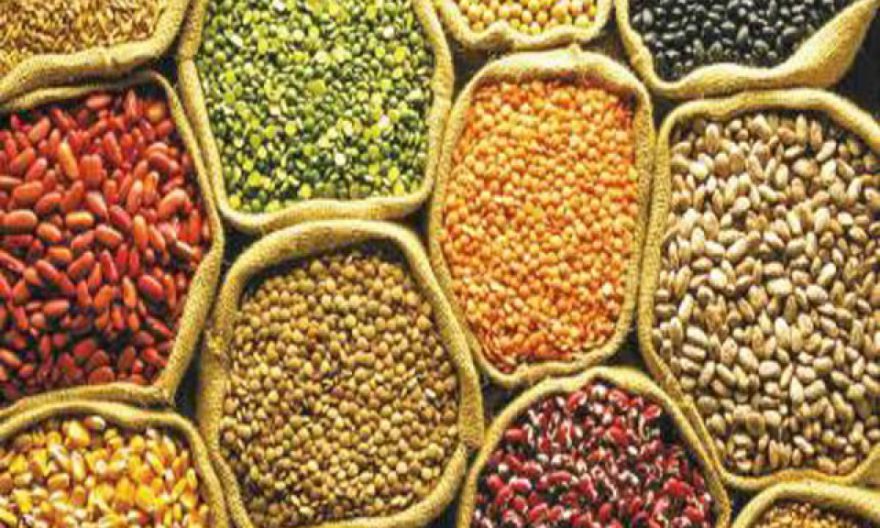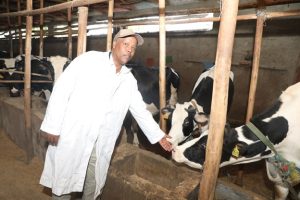
The Low Land Pulse research program in Ethiopia is an initiative aiming at studying and comprehending the dynamics of land usage and land cover change in the country’s lowland areas. These lowland areas represent a significant percentage of Ethiopia’s landscape. They are distinguished by distinct ecosystems and are home to a broad range of communities and species.
The program’s main goal is to gather and analyze data on many elements of land use and land cover change, such as deforestation, agricultural growth, urbanization, and infrastructural development. It seeks to discover the causes of these changes as well as their consequences for the environment, biodiversity, and local communities.
To obtain comprehensive data, the program takes a multidisciplinary approach, combining remote sensing tools, field surveys, and socioeconomic research. This information is then used to create models and tools to assist policymakers and stakeholders in making informed decisions about land use planning, conservation measures, and sustainable development in lowland areas.
The Low Land Pulse research program also works with local communities, government agencies, and international organizations to ensure that research findings are successfully disseminated and converted into practical policies and practices. It facilitates communication and knowledge exchange among many stakeholders to promote sustainable land management techniques and increase the resilience of lowland ecosystems across the country.
Endeshaw Habte et al stated in their academic paper entitled “Production and Marketing of Major Lowland Pulses in Ethiopia: Review of Developments, Trends, and Prospects” that lowland pulses are multipurpose crops that benefit farmers by providing protein, animal feed, cash income, and improving soil fertility through N fixation. Lowland pulses are eaten as a grain or as vegetables. Nifro (cooked beans) mixed with cereals, flour/split grain to make stew (wat), and whole seed to make samosas or soup. Besides, all parts of cowpea are used as food where the green pods and seeds are used as vegetables and the grain is also used to prepare several main dishes.
Accordingly, the program provides valuable insights into the drivers and impacts of land use and land cover change in lowland areas. This understanding is essential for developing effective strategies and policies for sustainable land management. Moreover, the program generates data and models that can be used by policymakers and stakeholders to make informed decisions regarding land use planning, conservation strategies, and sustainable development in lowland areas. This helps to ensure that decisions are based on scientific facts that lead to positive outcomes.
It is also imperative to preserve the area’s biodiversity because Ethiopia’s lowland areas are home to a variety of habitats and fauna. The research program can identify places of high conservation value and propose ways to safeguard and conserve biodiversity by examining land use dynamics. This helps to preserve endangered animals and ecosystems.
In response to these facts, Haramaya University created the Lowland Pulse Research Program in 1980. Since its start, the program has made significant contributions to technology production and diffusion operations. The initiative and its results have had a significant impact on community livelihood, farming systems, and health. The institution was able to distribute 12 common beans to the community and satisfy the nutritional needs of society.
HU Lowland Pulse Research Program Coordinator Erana Kebede said that with over 30 years of experience, the program has committed a significant amount of time and energy to lowland pulse research and technology transfer. As a result, it has successfully introduced 12 new common bean types. These bean varieties are now available not only in the local area but also across the entire country.
Indeed, the lowland Pulses type should be high-yielding, and resistant to major common illnesses, insects, and climate change. As a result, the type generated by HU has high Iron and Zinc contents, making it a key micronutrient source that can assist significantly in addressing the micronutrient deficit in Ethiopia.
In addition, the program is carrying out several nationally coordinated trials, such as maintaining common bean varieties and germplasms, multiplying and providing seeds of common bean varieties, promoting and scaling up existing lowland pulse crop technologies, developing a research project to address common bean production constraints, and so on.
He further noted that such research activities should be expanded at the national level since they give low-land pulse variations for students, food complexes, and other research institutes working on food ingredients, food mixing, and food engineering.
Beans, in particular, are becoming an increasingly important crop that significantly contributes to the national economy (commodity and employment) as well as a source of food and cash income in the country. Unlike in other regions of the country, eastern Ethiopia produces more than 90 percent of the common bean through intercropping with maize, sorghum, chat, and other crops, he explained.
“Lowland beans and pulses are now widely accepted in the community of Eastern Hararghe. Farmers are increasingly more aware of and interested in bean cultivation, even if sorghum and maize are still widely grown in the Eastern Hararghe region. According to research, bean cultivation is compatible with the local climate, particularly with the farming system,” he explained.
However, the area is mainly conducive to grow Khat, but the farmers are heavily interested in planting common beans since they gain yield by applying intercropping farming mechanisms. Planting sorghum or corn with khat is a bit challenging and not scientifically proven. As a result, the community favored common bean plantations that fix nitrogen biologically or naturally, supply natural fertilizer, and do not cause problems in intercropped crops. More importantly, farmers are encouraged to produce these protein-rich diets that are imperative for the impoverished.
However, the area is primarily suited to khat farming, but farmers are particularly interested in growing common beans since they increase production through intercropping farming techniques. Planting sorghum or corn with chat is difficult and has not been scientifically verified. As a result, the community preferred common bean plantations that fix nitrogen biologically or naturally, and provide natural fertilizer.
In general, there are many advantages to the Low Land Pulse research program in Ethiopia, including better knowledge, well-informed decision-making, biodiversity protection, sustainable development, cooperation, and increased resilience of lowland ecosystems. These advantages support the long-term health of Ethiopia’s local inhabitants and environment.
Therefore, the initiative has to be expanded and advanced nationwide to improve knowledge of the dynamics of land use in lowland areas and to support the creation of evidence-based plans for climate change mitigation, ecosystem conservation, and sustainable land management.
BY EPHREM ANDARGACHEW
THE ETHIOPIAN HERALD SUNDAY EDITION 22 OCTOBER 2023




